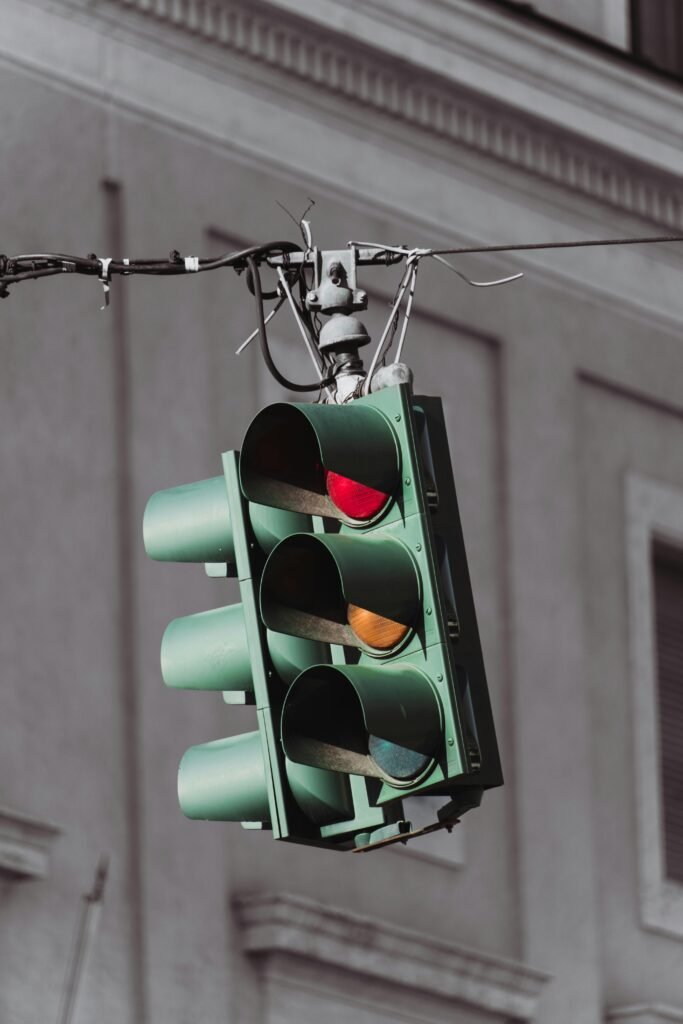Imagine you’re on a road trip, exploring the vast landscapes with the wind in your hair and the thrill of adventure in your heart. But amidst all the excitement, it’s crucial to prioritize safety, especially when it comes to firearms. “Ensuring Gun Safety: Tips for Carrying Guns in Vehicles” is a comprehensive guide that will equip you with the knowledge and best practices to ensure that your firearm stays secure and safe during your journey. From properly storing your gun to understanding state laws, this article will empower you to enjoy your travels while keeping safety at the forefront of your mind.

This image is property of images.pexels.com.
Secure Storage
Consider a Vehicle Safe
When it comes to gun safety in vehicles, one of the first things to consider is secure storage. A vehicle safe is an excellent option to keep your firearms out of sight and securely locked away. These safes are typically designed to fit in various locations within your vehicle, such as under the seat or in the trunk. Investing in a vehicle safe ensures that your guns are kept secure and provides an extra layer of protection against theft.
Use Locking Devices
Another option for secure storage in your vehicle is to use locking devices. These devices attach to your firearm and prevent unauthorized access. Cable locks, trigger locks, and chamber locks are some common types of locking devices available in the market. Utilizing these locks can help prevent accidental discharge or unauthorized use of your firearm, providing peace of mind while on the road.
Install Gun Holster
Installing a gun holster in your vehicle can be an effective way to securely store your firearm. A holster that is specifically designed for use in vehicles will ensure that your gun is readily accessible yet securely in place. Look for holsters that can be easily mounted in your vehicle, such as those that attach to the center console or under the steering column. Proper installation of a vehicle holster ensures that your firearm is within reach in case of an emergency.
Utilize a Lockable Glove Box
Many vehicles come equipped with a glove box, which provides a convenient storage space within the dashboard. Using a lockable glove box ensures that your firearm remains secure while you’re driving. The lockable feature prevents unauthorized access to your firearm, keeping it safe and out of reach. It is important to choose a lockable glove box that fits securely in your vehicle and can withstand forced entry attempts.
Use a Secure Trunk
If your vehicle has a trunk, utilizing it for firearm storage is another secure option. A trunk provides a separate locking compartment within your vehicle, keeping your firearms concealed and out of reach. Make sure to properly secure your firearms within the trunk, using additional locking devices or cases if necessary. This way, you can travel knowing that your guns are safely stored in a hidden location.
Proper Handgun Holstering
Choose a High-Quality Holster
When carrying a handgun in your vehicle, it is essential to choose a high-quality holster. A good holster should securely retain your firearm, provide easy accessibility, and offer adequate protection against accidental discharges. Look for holsters made from durable materials, such as Kydex or leather, that are designed specifically for your firearm model. Investing in a quality holster ensures that your gun is safely holstered while you’re on the move.
Ensure Proper Fit
In addition to choosing a high-quality holster, it is important to ensure that the holster fits your firearm properly. A loose-fitting holster can lead to unexpected movement or accidental trigger presses, compromising safety. On the other hand, a holster that is too tight may hinder quick and smooth drawing of your firearm. Take the time to find a holster that provides a snug and secure fit for your gun, ensuring both safety and ease of use.
Consider Accessibility and Comfort
When selecting a holster for your vehicle, consider accessibility and comfort. You want a holster that allows for quick and easy access to your firearm in case of an emergency. Look for holsters that can be mounted in a position that is easily reachable while seated. Additionally, prioritize comfort since you may be spending long periods driving. Holsters with adjustable cant and ride height can help you find the most comfortable and accessible position for your firearm.
Practice Drawing and Reholstering
Once you have chosen the right holster for your vehicle, it is crucial to practice drawing and reholstering your firearm. Familiarize yourself with the specific mechanics of your chosen holster and practice your draw in a safe and controlled environment. Practice regularly to build muscle memory and ensure that you can access your firearm quickly and safely. Equally important is practicing reholstering to ensure that your gun is properly secured in the holster after use.
Ammunition Considerations
Separate Ammunition from Firearms
When it comes to storing firearms in your vehicle, it is essential to separate the ammunition from the firearms themselves. Keeping the ammunition stored separately reduces the risk of accidental discharges or unauthorized use. Invest in separate containers or storage solutions specifically designed for ammunition to keep it secure and organized.
Store Ammunition in a Locked Container
To ensure that your ammunition is safely stored, use a locked container. This container should effectively restrict access and prevent tampering or theft. Look for lockable ammo cans or dedicated ammunition safes that provide secure storage options. Keeping your ammunition locked away adds an extra layer of security, particularly if you have passengers or make frequent stops during your journeys.
Consider Bullet Storage Options
While it’s important to store ammunition securely, you should also consider the specific storage needs of bullets. Bullet storage options, such as plastic cases or reloading boxes, can keep your bullets organized and protected from damage. These storage solutions typically have separate compartments or dividers, allowing you to store different types of ammunition together without the risk of them mixing or getting damaged.
Properly Dispose of Unwanted Ammunition
Dispose of unwanted or expired ammunition responsibly. Do not simply discard it in the trash or leave it lying around. Find a reputable local range, shooting facility, or law enforcement agency that can provide guidance on how to properly dispose of ammunition. Following the correct disposal procedures ensures that expired or damaged ammunition is safely handled and does not pose a risk to others.
Concealment and Discretion
Choose Proper Concealment
When carrying firearms in your vehicle, it is important to choose proper concealment. Opt for methods that keep your firearms out of sight from prying eyes, reducing the risk of theft or unwanted attention. Many holsters and storage solutions are designed specifically for concealed carry in vehicles, offering discreet and effective ways to keep your firearms hidden.
Use Seat Covers or Diversion Safes
Seat covers and diversion safes can provide additional concealment options for your firearms. These accessories are designed to look like ordinary items, such as seat cushions or storage compartments, but actually have hidden compartments for storing firearms. Using these products can make it more difficult for potential thieves or unauthorized individuals to identify and access your firearms.
Avoid Leaving Firearms in Visible Areas
One of the most crucial aspects of gun safety in vehicles is to avoid leaving firearms in visible areas. Leaving a firearm on the seat, dashboard, or in plain sight within your vehicle can attract unwanted attention and increase the risk of theft. Always ensure that your firearms are securely stored and concealed from view, even when you are inside the vehicle.
Exercise Discretion in Parking and Unloading
When parking your vehicle in public spaces, exercise discretion and choose locations that offer enhanced security. Well-lit areas, parking lots with surveillance cameras, or secure parking garages are ideal choices. Additionally, be discreet while unloading and transferring firearms from your vehicle to avoid drawing unnecessary attention. Maintain situational awareness and ensure that the area is safe before handling firearms outside of your vehicle.

This image is property of images.pexels.com.
Firearm Handling in a Vehicle
Ensure the Gun is Unloaded
Before entering your vehicle or handing a firearm, ensure that the gun is unloaded. Always visually and physically inspect the firearm to ensure that there is no ammunition in the chamber or magazine. This is a critical safety precaution that should be followed every time you handle firearms, especially when entering or exiting a vehicle.
Keep the Muzzle Pointed in a Safe Direction
When handling firearms in a vehicle, it is vital to keep the muzzle pointed in a safe direction. Avoid pointing the firearm towards yourself, passengers, or any part of the vehicle. Instead, ensure that the muzzle is pointed down towards the floor or roof of the vehicle, away from any potential hazards.
Avoid Placing Fingers on the Trigger
Another important rule of firearm handling in a vehicle is to avoid placing fingers on the trigger unless you intend to fire the gun. Keep your fingers outside of the trigger guard and along the frame of the firearm. This reduces the risk of unintentional discharge and ensures that the firearm remains in a safe condition.
Maintain a Firm Grip during Transportation
While transporting firearms in a vehicle, it is important to maintain a firm grip on the firearm at all times. This helps prevent accidental drops or unintended movement of the firearm. A secure grip also ensures that you have full control over the firearm, should you need to access it quickly in an emergency situation.
Legal Compliance
Research and Understand Local Laws
When carrying firearms in your vehicle, it is crucial to research and understand the local laws and regulations regarding firearms and transportation. Laws regarding the transport of firearms can vary significantly from one jurisdiction to another. Researching and familiarizing yourself with these laws ensures that you remain compliant and avoid potential legal complications.
Obtain the Necessary Permits and Licenses
Depending on your location, you may be required to possess specific permits or licenses to carry firearms in your vehicle. Have a clear understanding of the legal requirements and ensure that you have obtained any necessary permits or licenses before transporting firearms. Compliance with these legal obligations is important to maintain both your safety and legal standing.
Familiarize Yourself with Specific State Regulations
In addition to general laws and permits, some states may have specific regulations regarding the transportation of firearms in vehicles. For example, certain states may require firearms to be stored in specific compartments, such as locked boxes or trunks. Familiarize yourself with the specific regulations of the state you are traveling in to ensure full compliance with the law.

This image is property of images.pexels.com.
Gun Safety Education and Training
Seek Professional Training
One of the best ways to ensure gun safety while carrying firearms in your vehicle is to seek professional training. Enroll in a reputable firearm safety course or participate in training programs offered by qualified instructors. These courses provide valuable knowledge and practical skills that can significantly enhance your ability to handle firearms safely in a vehicle.
Learn About Gun Handling and Storage
Even if you have previous experience with firearms, it is essential to continually educate yourself about gun handling and storage, particularly in the context of vehicle transportation. Stay up-to-date with best practices, safety measures, and new technologies related to gun safety in vehicles through reliable sources. Expanding your knowledge contributes to maintaining a safe and responsible approach towards firearms.
Stay Up-to-Date with Safety Measures
Gun safety practices and technologies can evolve over time. Stay up-to-date with the latest safety measures and advancements in firearm storage and transportation. Periodically review your storage methods and explore new options or products that may enhance gun safety in your vehicle.
Emergency Preparedness
Have a First Aid Kit in Your Vehicle
Emergency preparedness goes beyond firearm safety. Keep a well-stocked first aid kit in your vehicle to handle any medical emergencies that may arise. Accidents can happen, and having a first aid kit readily available can make a crucial difference in providing immediate care until professional medical help arrives.
Keep Emergency Contact Information Handy
In case of emergencies, it is important to have essential contact information readily available in your vehicle. Keep a list of emergency contacts, including local law enforcement, medical services, and trusted individuals who can be contacted in case of an emergency. This information can help you quickly and efficiently navigate emergency situations.
Practice Situational Awareness
During your travels, practice situational awareness to stay vigilant and aware of your surroundings. Be aware of potential risks or threats and take proactive measures to avoid or mitigate them. Maintaining situational awareness enhances your overall safety and allows you to make informed decisions regarding the handling and storage of firearms in your vehicle.
Consider Self-Defense Techniques
While carrying firearms in your vehicle can provide a sense of security, it is also important to consider self-defense techniques beyond the use of firearms. Explore self-defense options, such as personal safety training or non-lethal defensive tools, to broaden your ability to protect yourself and others in case of a dangerous situation.
Child Safety
Always Keep Firearms Unloaded and Locked
When traveling with children in your vehicle, it is essential to always keep your firearms unloaded and securely locked away. Children are naturally curious, and their curiosity may extend to firearms if they are accessible. By consistently keeping firearms unloaded and locked, you reduce the risk of accidents or unauthorized access.
Educate Children about Gun Safety
Teaching children about gun safety is crucial for their own protection, even if they may not directly handle firearms. Educate your children about the potential dangers of firearms and instruct them to never touch or handle firearms without adult supervision. Encouraging an open and ongoing dialogue about gun safety can help children understand the importance of responsible firearm handling.
Secure Firearms Out of Children’s Reach
When traveling with children, it is imperative to secure firearms out of their reach. Utilize child-resistant gun locks or safes that are specifically designed to prevent unauthorized access. Ensure that firearms are stored in a location where children cannot access them, such as in a locked trunk or compartment.
Consider Child-Resistant Gun Locks or Safes
Child-resistant gun locks or safes provide an additional layer of protection when it comes to child safety. These locks or safes are designed to be difficult for children to open or tamper with. Deploying child-resistant locks reinforces safe storage practices and prevents accidental or unauthorized access to firearms.
Regular Maintenance and Inspection
Clean and Lubricate Firearms as Needed
Regular maintenance of your firearms is crucial to ensure their safe and reliable operation. Clean and lubricate your firearms as recommended by the manufacturer or at regular intervals. Removing dirt, debris, and excess carbon buildup helps maintain the functionality of your firearms and prevents malfunctions.
Regularly Check for Wear and Tear
Regularly inspect your firearms for signs of wear and tear. Pay attention to any significant changes in the condition of the firearm, such as cracks, loose parts, or unusual noises. Identifying and addressing these issues promptly ensures that your firearms remain safe and in working order.
Inspect Locking Mechanisms and Devices
Regularly inspect the locking mechanisms and devices used for firearm storage in your vehicle. Ensure that these mechanisms are functioning properly and securely holding the firearms in place. Regular inspections prevent potential failures and allow you to address any issues before they compromise the security of your firearms.
In conclusion, ensuring gun safety while carrying firearms in vehicles is of utmost importance. By following best practices for secure storage, proper handgun holstering, ammunition considerations, concealment and discretion, firearm handling, legal compliance, gun safety education and training, emergency preparedness, child safety, and regular maintenance and inspection, you can maintain a safe and responsible approach towards firearms in your vehicle. Prioritize safety, stay informed about laws and regulations, and seek professional guidance to ensure the well-being of yourself, your passengers, and the community around you.



